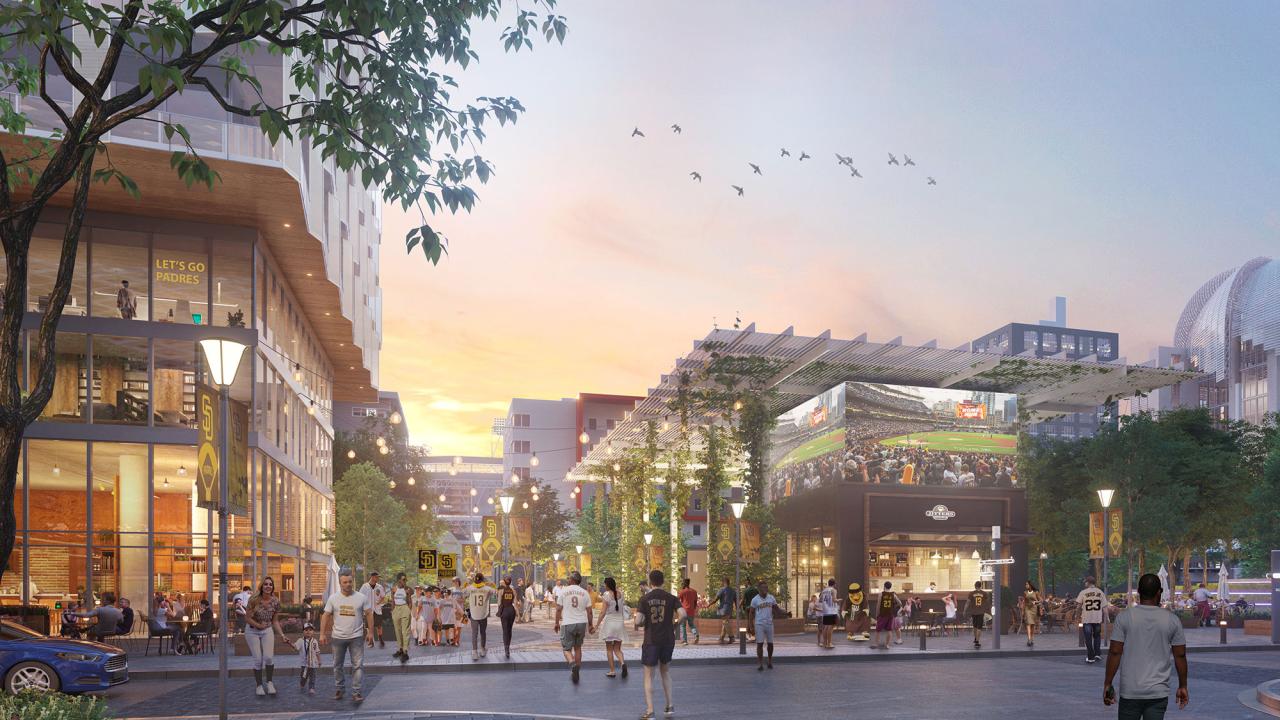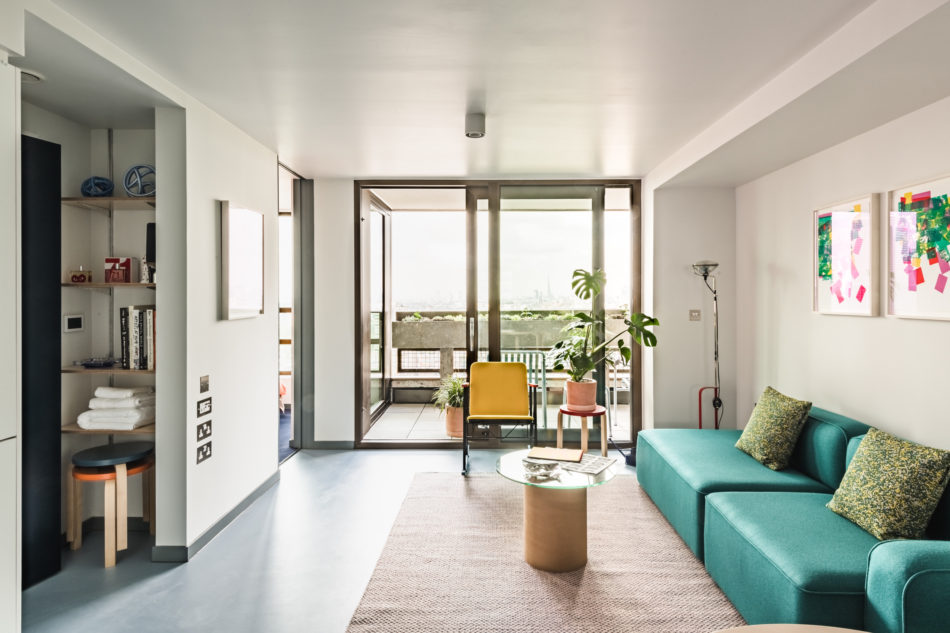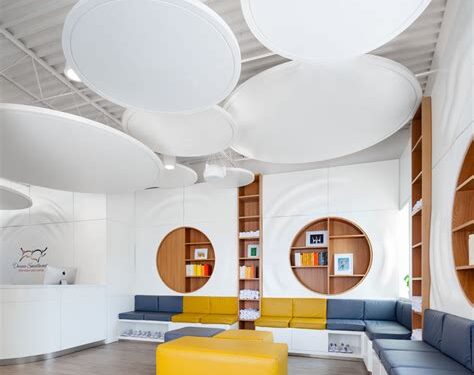In today’s rapidly evolving society, the power of design has transcended aesthetics and functionality to become a catalyst for social progress. Community-focused design is not just about creating attractive spaces or user-friendly digital interfaces; it’s a transformative process that prioritizes inclusivity, collaboration, and empowerment. This approach fosters environments where individuals feel valued, engaged, and motivated to contribute to collective growth. In this comprehensive article, we delve into the multifaceted world of community-focused designs and explore how they drive social development, enhance connectivity, and create lasting impacts on communities worldwide.
Over the past few decades, designers, urban planners, and digital innovators have reimagined the role of design in society. Gone are the days when aesthetics were the sole objective. Today, community-focused design is emerging as a revolutionary trend that emphasizes participation, local culture, and social responsibility. By integrating diverse perspectives and addressing unique community needs, these designs not only improve quality of life but also empower people to take active roles in shaping their environments.
Community-focused designs can be seen in urban developments, public spaces, digital platforms, and even corporate offices. These environments are carefully crafted to enhance interaction, build trust, and spur social growth. This article will outline the core principles of community-focused design, discuss its benefits, and provide practical insights into implementation. Along the way, we will highlight real-world examples and case studies that demonstrate the profound impact of this approach.
Defining Community-Focused Design
Community-focused design is an interdisciplinary strategy that centers on creating solutions tailored to the needs, values, and aspirations of a specific group or locality. It goes beyond mere functionality to incorporate social, cultural, and economic factors, ensuring that the end product resonates deeply with its intended audience.
Key Characteristics
Community-focused designs typically exhibit the following characteristics:
A. Inclusivity: Designs are created with the intention of welcoming diverse groups and ensuring accessibility for all members of the community.
B. Collaboration: Stakeholders—from local residents to business owners—are actively involved in the planning and decision-making process.
C. Sustainability: Both environmental and social sustainability are prioritized, ensuring that the design supports long-term growth.
D. Cultural Sensitivity: The unique heritage, traditions, and values of the community are respected and integrated into the design.
E. Adaptability: Designs are flexible and can evolve based on community feedback and changing needs.
These principles form the backbone of community-focused design, providing a framework for projects that aim to foster social cohesion and drive progressive change.
The Role of Community-Focused Designs in Social Growth
Community-focused designs have a profound impact on social growth by creating spaces and experiences that nurture interaction, build relationships, and facilitate civic engagement. When design prioritizes the needs of its users, it naturally encourages participation and fosters a sense of belonging. Below are several ways in which these designs spur social development:
Enhancing Public Spaces
Urban environments are increasingly being rethought to promote community interaction. Public spaces such as parks, plazas, and community centers are designed to invite residents to engage in activities, share experiences, and build networks. When these areas are thoughtfully planned with the community in mind, they become hubs of social activity, nurturing creativity and collaboration.
For instance, a park designed with multiple zones for recreational activities, social gatherings, and cultural events can serve as a melting pot for diverse groups. Such spaces not only offer physical relief from urban congestion but also function as platforms for dialogue, learning, and community-building.
Empowering Digital Communities
In the digital realm, platforms that emphasize user participation and collaborative content creation are reshaping the way communities interact online. Community forums, social media networks, and collaborative projects exemplify how digital design can create inclusive virtual spaces. By giving users a voice in shaping the platform—through customizable interfaces, user-generated content, and transparent decision-making—designers can cultivate environments that feel personal and meaningful.
Fostering Economic and Social Innovation
Community-focused designs also play a vital role in spurring economic growth and innovation. When local businesses, non-profit organizations, and government bodies work together to create supportive environments, the resulting synergy can lead to innovative solutions that address social and economic challenges. This collaborative effort often results in increased employment opportunities, enhanced local services, and a vibrant local economy.
A well-designed community center, for example, might house small businesses, cultural initiatives, and educational programs under one roof, fostering an ecosystem where creativity and entrepreneurship can thrive.
Building Trust and Social Capital
Trust is the foundation of any thriving community. When residents see that their opinions and needs are valued, they are more likely to participate in community activities and civic duties. This trust builds social capital—an essential ingredient for sustainable social growth. Community-focused designs that promote transparency and participation lead to stronger bonds among residents, making the community more resilient in times of change or crisis.
Benefits of Embracing Community-Focused Designs
Adopting a community-focused design approach offers numerous benefits that extend beyond mere aesthetics. Here, we explore several key advantages:
A. Improved Quality of Life: Thoughtfully designed spaces can enhance physical and mental well-being, offering safe, accessible environments that promote healthy living.
B. Enhanced Social Interaction: When spaces are designed to be welcoming and inclusive, they naturally encourage social interaction and networking.
C. Economic Opportunities: Community-driven designs can attract businesses and investors, leading to job creation and economic growth.
D. Cultural Preservation: By integrating local traditions and heritage, these designs help preserve cultural identity and promote community pride.
E. Resilience and Adaptability: Communities with strong social networks are better equipped to handle economic and social challenges, making them more resilient over time.
F. Environmental Sustainability: Many community-focused projects incorporate green building practices and sustainable technologies, contributing to environmental conservation.
These benefits collectively contribute to a more dynamic, cohesive, and thriving community, where every individual has the opportunity to participate in shaping the local landscape.
How to Implement Community-Focused Design Strategies
Successful implementation of community-focused design requires a strategic approach that involves multiple stakeholders and a deep understanding of the community’s unique needs. Here are some essential steps for incorporating this approach:
A. Research and Community Engagement
Before any design work begins, it’s crucial to gather insights from the community. This involves:
- Conducting surveys and focus groups
- Hosting community forums
- Collaborating with local leaders and organizations
By involving community members from the outset, designers can ensure that the final product reflects the diverse needs and aspirations of the community.
B. Collaborative Planning
Once the research phase is complete, the next step is to engage in collaborative planning. This means working closely with local stakeholders to develop a design that balances creativity with practicality. In this phase, ideas are exchanged, and a shared vision is established.
C. Iterative Design and Feedback
Community-focused design is inherently iterative. Designers should implement prototypes and gather feedback continuously. This process allows for the refinement of design elements and ensures that the final product is well-tuned to the community’s expectations.
D. Integrating Cultural Elements
To truly resonate with the community, designs should incorporate local cultural elements. This might include:
A. Local Art and Craft: Featuring artwork from local artists
B. Traditional Architecture: Incorporating design motifs that reflect the community’s heritage
C. Cultural Programming: Organizing events that celebrate local traditions
E. Ensuring Accessibility and Inclusivity
An essential component of community-focused design is ensuring that all community members can access and enjoy the space or platform. This includes:
A. Universal Design Principles: Ensuring physical spaces are accessible to people of all abilities
B. Language and Communication: Offering multilingual support and clear signage
C. Affordability: Creating solutions that are economically accessible to a diverse range of users
F. Leveraging Technology
Modern technology offers innovative tools to enhance community-focused designs. From digital feedback platforms to virtual reality prototypes, technology can help bridge gaps between designers and community members, ensuring a seamless, participatory process.
Case Studies: Success Stories in Community-Focused Design
Numerous projects around the globe demonstrate the transformative power of community-focused design. Here are a few notable examples:
Urban Renewal Initiatives
Cities such as Copenhagen and Melbourne have embraced community-focused design in their urban renewal projects. By engaging residents in the planning process and prioritizing public spaces that encourage social interaction, these cities have witnessed a renaissance in local culture and economic vibrancy. Public parks, pedestrian zones, and community centers have become symbols of local pride and sustainable growth.
Digital Platforms and Online Communities
In the digital sphere, platforms like Wikipedia and various open-source communities are prime examples of community-focused design. These platforms empower users to contribute content, collaborate on projects, and share knowledge freely. The success of these digital communities underscores the importance of transparency, collaboration, and continuous engagement in fostering social growth.
Cultural and Community Centers
In many cities, cultural centers that host art exhibitions, workshops, and community events serve as vital hubs for social interaction. For example, community centers in cities across Latin America have revitalized neighborhoods by offering spaces where residents can learn, create, and share experiences. These centers not only preserve local culture but also inspire innovation and collective progress.
Educational Initiatives
Educational institutions that embrace community-focused design often see improved student engagement and better learning outcomes. Schools and universities are incorporating flexible learning spaces, interactive digital tools, and community partnerships into their curricula. These initiatives create dynamic environments where students are encouraged to collaborate, innovate, and develop skills that are essential for future success.
The Social Impact of Community-Focused Design
The ripple effects of community-focused design extend far beyond the physical or digital spaces they occupy. Their impact on social dynamics is profound, shaping everything from personal well-being to local economies. Here are some key areas where the influence of such design is most evident:
Strengthening Community Bonds
When a community feels heard and represented in its surroundings, the result is a stronger sense of unity and belonging. People are more likely to participate in local events, volunteer for community projects, and support local businesses. This sense of community fosters resilience and encourages collective problem-solving.
Enhancing Civic Engagement
Community-focused design encourages residents to take an active role in the governance and development of their environment. By creating transparent, interactive platforms for feedback and discussion, designers empower individuals to influence decisions that affect their lives. This heightened civic engagement often leads to increased trust in local authorities and a more vibrant democratic process.
Promoting Social Equity
A core tenet of community-focused design is ensuring that all community members—regardless of background, economic status, or physical ability—have equal access to opportunities. When spaces and digital platforms are designed with equity in mind, they help bridge social divides, reduce disparities, and create environments where everyone can thrive.
Stimulating Local Economies
Communities that are well-designed often attract new businesses and investors. The vibrant public spaces and active social networks that result from community-focused design create a fertile ground for entrepreneurship and economic development. Local artisans, small business owners, and innovative startups benefit from the increased foot traffic and community support that these environments foster.

Best Practices for Designers and Urban Planners
For professionals looking to incorporate community-focused strategies into their projects, the following best practices provide a roadmap for success:
A. Engage Early and Often: Initiate community involvement from the project’s inception and maintain open channels of communication throughout the design process.
B. Adopt a Holistic Approach: Consider the physical, digital, social, and cultural dimensions of the community in your design strategy.
C. Emphasize Flexibility: Build adaptable spaces that can evolve based on changing community needs and emerging trends.
D. Invest in Sustainable Practices: Incorporate green technologies and environmentally friendly materials to ensure that designs support long-term growth.
E. Leverage Local Expertise: Collaborate with local artists, architects, and community leaders who have an intimate understanding of the area’s cultural and social dynamics.
F. Measure Impact: Establish metrics to assess the social, economic, and environmental impact of the design, and be prepared to adjust strategies based on feedback and measurable outcomes.
Overcoming Challenges in Community-Focused Design
Despite its numerous advantages, community-focused design also presents several challenges that must be addressed for successful implementation. These challenges include:
Balancing Diverse Needs
Communities are rarely homogenous. Conflicting interests and diverse priorities can create tension during the planning process. Designers must navigate these complexities by facilitating open dialogue and ensuring that every voice is heard. Utilizing conflict resolution strategies and seeking compromise can help mitigate these challenges.
Budget Constraints and Funding
Implementing community-focused projects often requires significant investment. Securing funding from public and private sources can be challenging, especially in economically disadvantaged areas. Creative financing solutions, including public-private partnerships, grants, and community crowdfunding, can provide viable pathways to overcome budgetary hurdles.
Maintaining Engagement Over Time
Sustaining community involvement throughout the lifecycle of a project is essential for long-term success. Initial enthusiasm can wane if residents feel their contributions are not leading to tangible outcomes. Designers must establish continuous feedback mechanisms and celebrate milestones to keep the community engaged and motivated.
Navigating Regulatory and Bureaucratic Hurdles
Public projects, in particular, are subject to extensive regulations and bureaucratic procedures that can slow down implementation. Navigating these hurdles requires persistence, strong leadership, and the ability to advocate effectively on behalf of the community’s needs.
Future Trends in Community-Focused Design
Looking ahead, several emerging trends indicate that community-focused design will continue to evolve and expand its impact:
Integration of Smart Technologies
As cities become increasingly connected through the Internet of Things (IoT), smart technologies will play a vital role in community-focused design. Sensors, data analytics, and real-time feedback systems can help urban planners monitor public spaces and make data-driven decisions that enhance community engagement and efficiency.
Hybrid Physical-Digital Spaces
The future of design is likely to see a blending of physical and digital realms. Hybrid spaces—such as augmented reality-enhanced public areas or community apps that complement physical gatherings—will offer new ways to engage residents. These innovations provide opportunities for real-time interaction, enhanced accessibility, and a deeper sense of community.
Emphasis on Resilience and Adaptability
In the face of global challenges such as climate change and economic volatility, designs that emphasize resilience and adaptability will become increasingly important. Communities will need spaces that can evolve in response to unexpected challenges, ensuring continuity in social interaction and civic participation.
Greater Focus on Mental Health and Well-being
The link between physical environments and mental health is receiving growing attention. Future designs are expected to incorporate elements that promote well-being, such as green spaces, quiet zones, and areas designed for stress relief and mindfulness. By addressing mental health, community-focused design will contribute to healthier, more vibrant societies.

The Broader Implications of Community-Focused Design
The ripple effects of community-focused design extend far beyond immediate social or economic benefits. By fostering a sense of belonging and shared purpose, these designs can influence broader societal trends. Some of these wider implications include:
A. Civic Pride and Identity: When communities see their history, culture, and aspirations reflected in their environment, it strengthens local identity and civic pride.
B. Innovative Problem Solving: Collaborative design processes often lead to innovative solutions that can be applied to other social challenges, from urban planning to public health.
C. Enhanced Education and Learning: Community-driven spaces create informal learning environments where residents can share skills, knowledge, and experiences, thereby raising the overall educational level of the community.
D. Strengthened Democracy: Engaged citizens who participate in shaping their environment are more likely to take active roles in local governance, leading to a more vibrant and accountable democratic process.
Conclusion
Community-focused design is much more than an architectural or aesthetic trend—it is a powerful approach that has the potential to transform societies from the ground up. By centering design on the needs, values, and aspirations of local communities, designers can create environments that promote inclusivity, foster social cohesion, and drive sustainable growth. Whether it’s a revitalized urban park, a dynamic digital platform, or a multi-functional community center, the principles of community-focused design hold the promise of igniting social innovation and creating lasting, positive change.
As communities around the globe continue to face complex challenges, the adoption of community-focused design principles offers a roadmap for building resilient, vibrant, and connected societies. For policymakers, urban planners, and digital innovators alike, the message is clear: design that is truly inclusive and responsive is not just beneficial—it is essential for fostering social growth and progress in the modern era.
By embracing collaboration, sustainability, and cultural sensitivity, community-focused designs can help shape a future where every individual feels empowered to contribute to the collective well-being. In this rapidly changing world, the role of design in facilitating social growth is more critical than ever. It is a call to action for communities and designers to come together, innovate, and build environments that nurture both human connection and creative expression.














